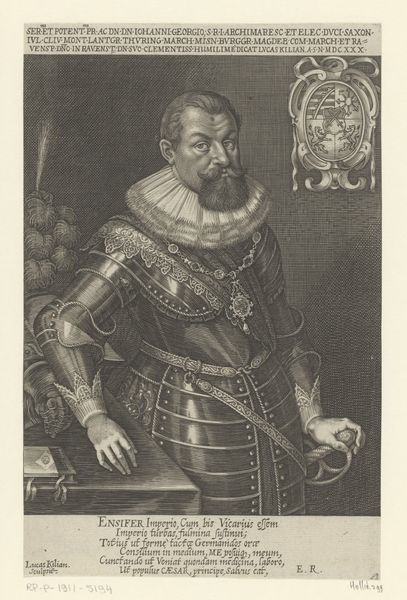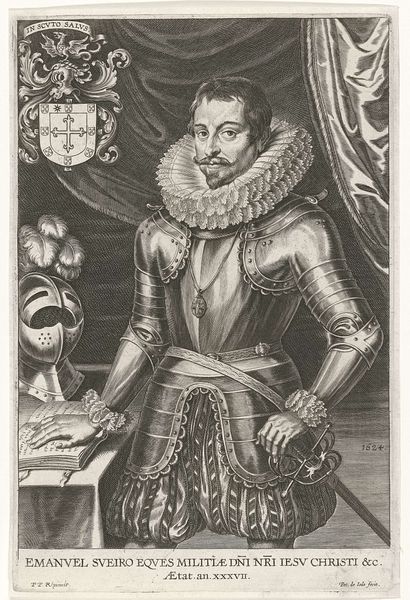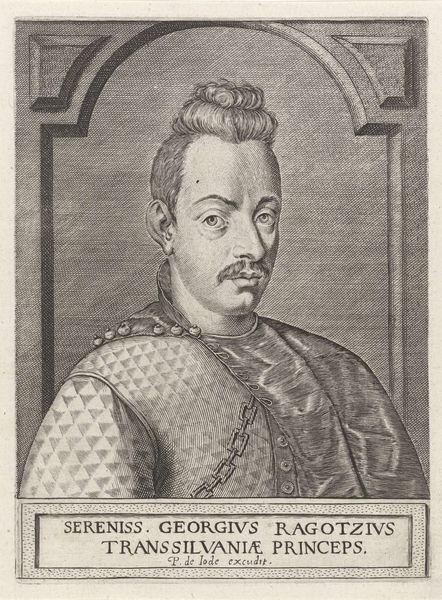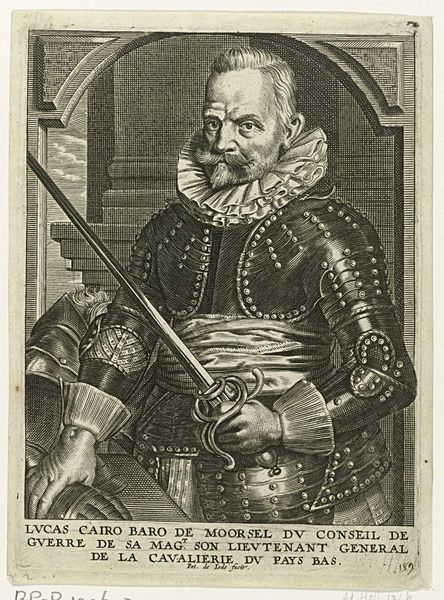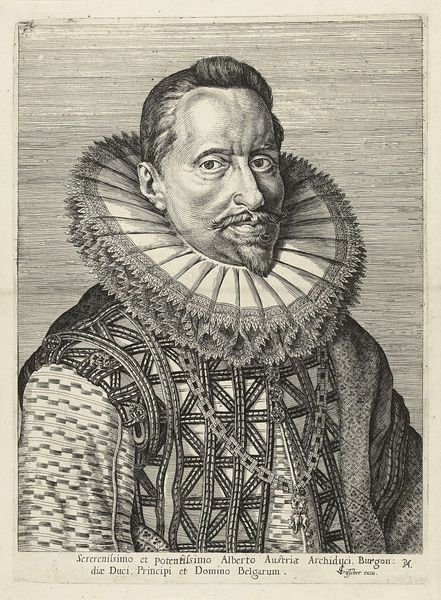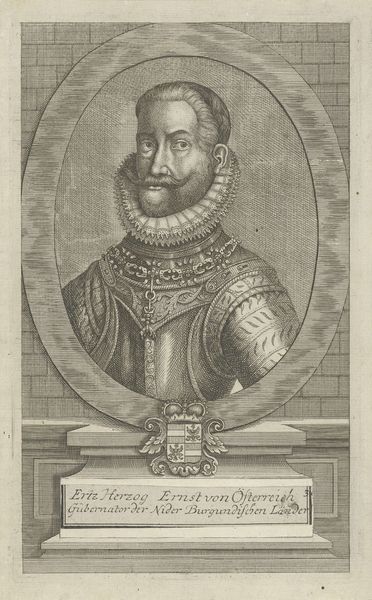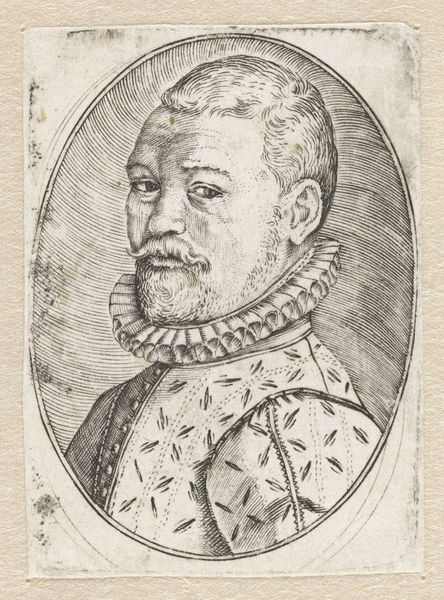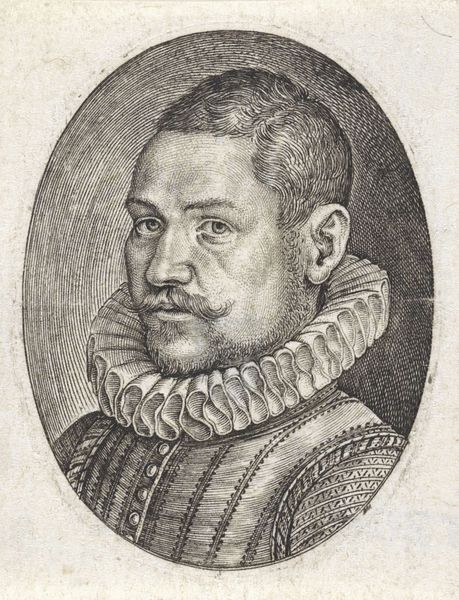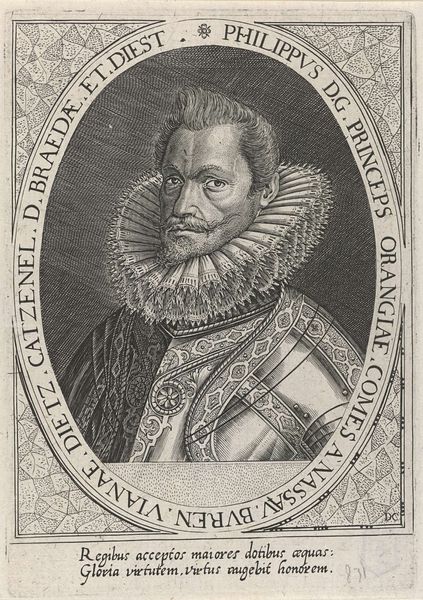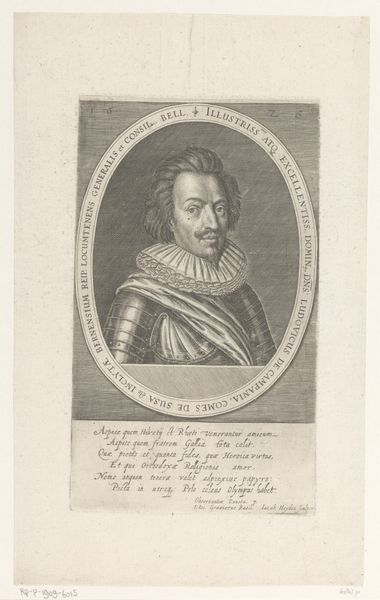
Portret van koning Filips III van Spanje, als koning van Portugal after 1621
0:00
0:00
print, engraving
#
portrait
#
baroque
# print
#
old engraving style
#
history-painting
#
engraving
#
realism
Dimensions: height 190 mm, width 132 mm
Copyright: Rijks Museum: Open Domain
Curator: Standing before us is a print executed after 1621, "Portret van koning Filips III van Spanje, als koning van Portugal"—or Portrait of King Phillip III of Spain, as King of Portugal, now residing here at the Rijksmuseum. It’s credited to Cornelis Galle I. Editor: My initial reaction is one of…melancholy, perhaps? The grayscale gives it a somber mood, and despite his royal attire, there's a weariness in his eyes. The intricate crown feels heavy, and the crisp ruff encircling his neck appears almost like a barrier. Curator: The historical weight here is undeniable. Phillip III's reign was marked by Spanish decline, economic struggles, and increased reliance on favorites. It's hard not to view this image through that lens, knowing what unfolded during his rule and after. Editor: Absolutely. The visual language is compelling: The heavy armor suggests strength and power, yet the intricate detailing almost feels like a fragile facade. Notice how the artist renders light on the metal, giving it a reflective sheen that contrasts with the King's own weary face. Is this perhaps meant to comment on the superficiality of power? Curator: It speaks to the burdens of leadership. Consider the context: Spain’s relationship with Portugal was complex and fraught with tension. Galle portrays Phillip wearing the Portuguese crown, highlighting his contested position. Editor: Indeed. And consider the recurring motif of the crown throughout history, particularly its inherent duality. On one hand, it symbolizes divine right and sovereign authority. On the other, it's a powerful reminder of mortality and accountability, a burden often depicted with gravity across different cultural expressions. It appears to embody that contradiction here as well. Curator: This print functions as a historical artifact and a political statement, echoing Spain's dominion and the monarch's place within that hierarchy, revealing broader intersectional power dynamics across gender, race and politics. The very act of representation reinforces the King's authority. Editor: Reflecting on this, it seems that Galle has encapsulated a moment of complex emotional and historical weight in a single image, rendering its symbolic content poignant. Curator: Indeed, it brings us to question: What constitutes lasting power when the symbols of authority begin to mirror a heavier reality?
Comments
No comments
Be the first to comment and join the conversation on the ultimate creative platform.

